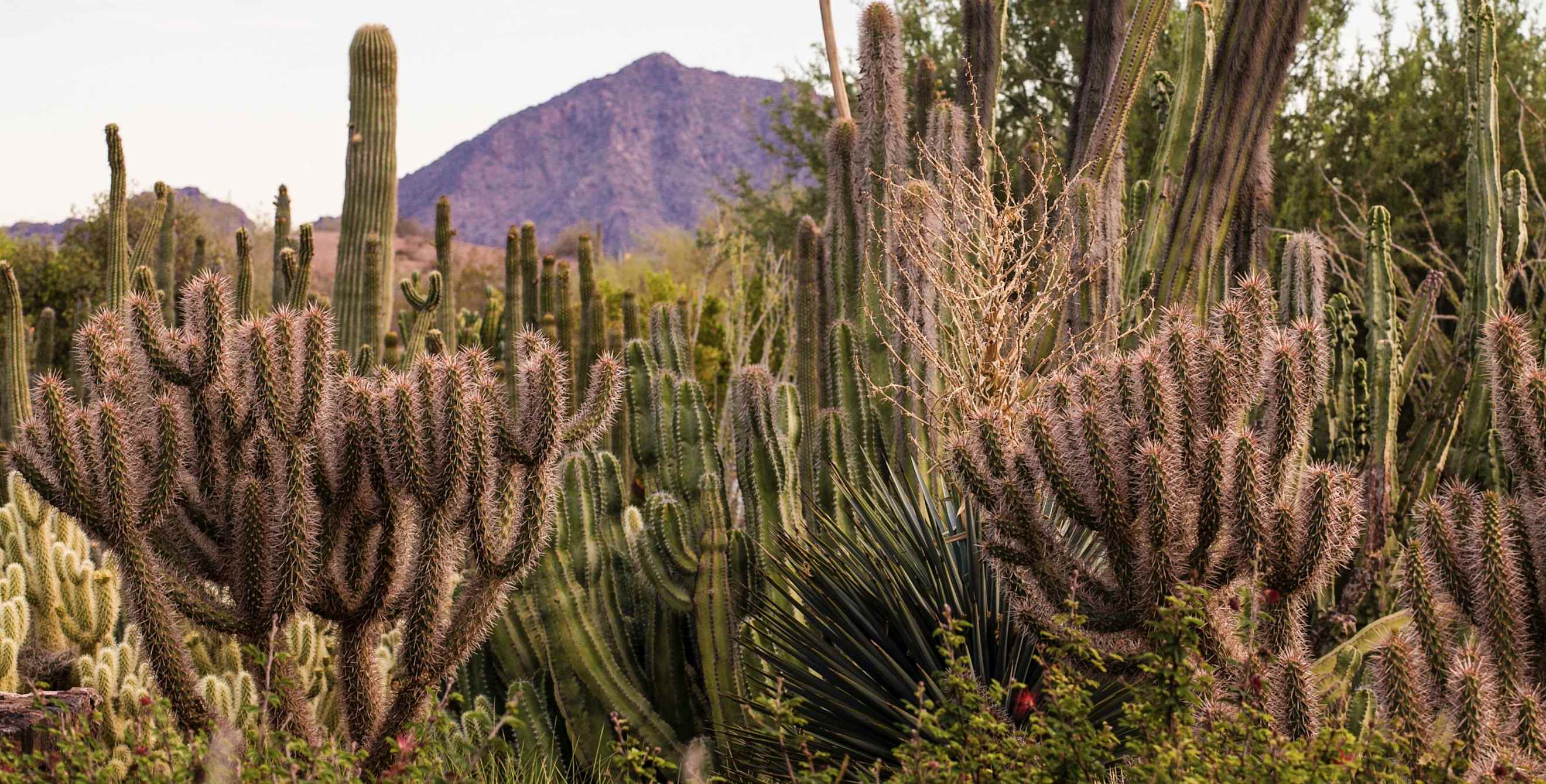
Desert Botanical Garden in Phoenix Turns 80
What began as a modest collection of desert specimens has bloomed into a Phoenix gem.

During the Great Depression, Gertrude Divine Webster, a wealthy divorcée with a penchant for real estate speculation and Cuban cigars, acquired some rare (and temperamental) cacti. A friend referred her to Gustaf Starck, a Swedish-born engineer and a self-taught botanist, for advice on raising them. United by their succulent obsession, Webster and Starck hatched a plan to create a botanical garden in Phoenix specifically devoted to desert plants. The unlikely duo drummed up support and funding from media executives and legislators, business leaders and botanists, and in 1939, their dream came true, when Desert Botanical Garden opened its gates in Papago Park, a protected open space in the heart of the Valley of the Sun.
Eight decades later, Desert Botancial Garden has grown, from a modest collection of 1,000 specimens to an expansive one—50,000 plants on 14 acres. The living collection, which comprises 4,357 species ranging from agaves to desert zinnias, draws not only pollinators, but also more than 450,000 visitors annually. Inside, the visitors (and the butterflies) can fan out along trails that loop past themed areas like the wildflower garden, the much-Instagrammed heritage collection of specimen cactus, and a section devoted to the plants raised and used by the indigenous peoples of the Sonoran Desert. And, for those looking to pair their petal-peeping with some culture, the garden hosts exhibits, lectures, concerts, dance performances, and art exhibits. For instance, the Cracking Art installation (October 12, 2019–May 10, 2020) will bring 1,000 giant plastic animal sculptures to the grounds, including a flock of neon penguins that will hide among the cacti. Meanwhile, the garden’s eateries—Gertrude’s restaurant and bar and casual Patio Cafe, plus the well-stocked shop—beckon those looking to while away an hour or two.
“The Desert Botanical Garden has evolved into an Arizona gem,” says Phoenix landscape architect Steve Martino, who designed the garden’s cactus and succulent galleries and outdoor amphitheater. “Even with all the events and the art, the garden at its core is still about scientific research and conservation. It’s a great place to see desert plants.”
Gertrude Webster and Gustaf Starck would be proud.
Spend less on entertainment by using your AAA discount at movie theaters, sporting events, and popular attractions.